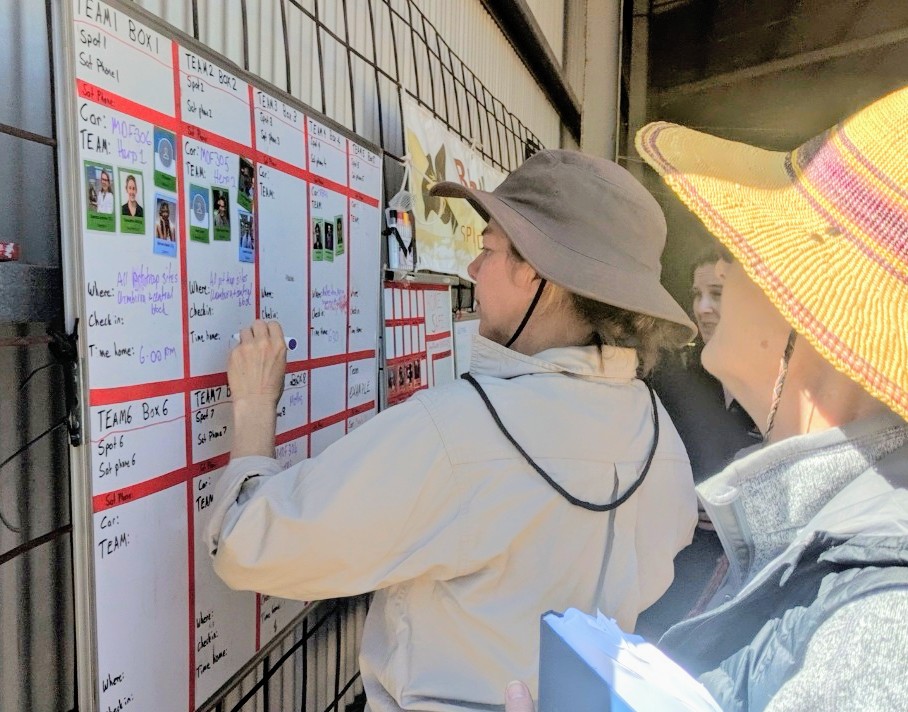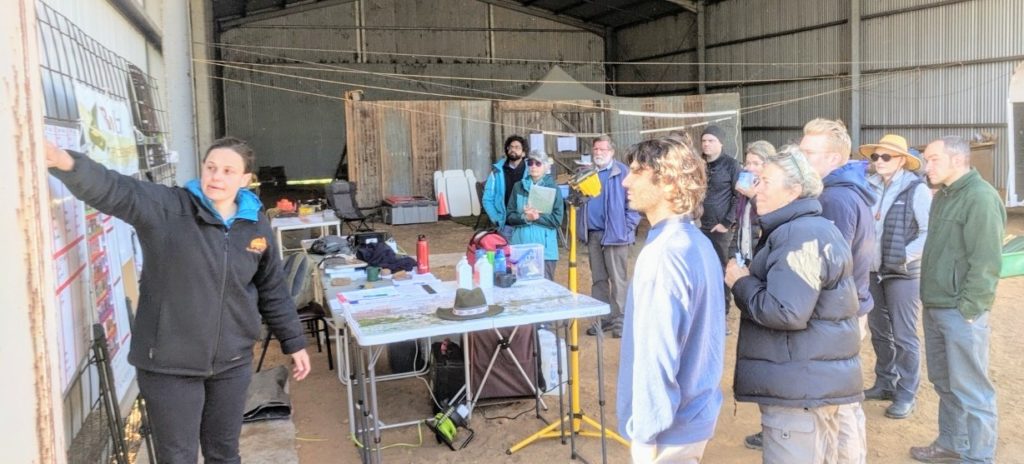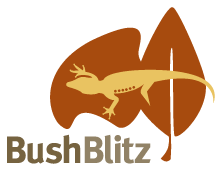
It’s day one on the Little Desert Bush Blitz in western Victoria!
Scientists from Museums Victoria, Melbourne Herbarium, Queensland Museum and the University of NSW are being briefed before they head into the field to begin their first day of collection. They will set up standard pitfall traps to collect reptiles and amphibians, mini pitfall traps to collect spiders, Malaise traps to collect flying insects and light traps to collect moths. The team will also be collecting plants, using sweep nets to collect bees and searching under rocks for snails. With all this effort, new species are almost a given.
Team safety briefing – day 1
The Little Desert Bush Blitz will focus, not surprisingly, on the Little Desert National Park, as well as a selection of other small conservation areas in the region. The park covers 132,647 ha, from the Wimmera River in the east to the South Australian border in the west. Surrounded by agricultural land, the park consists mainly of deep sandy soils with very low fertility, interspersed with small pockets of clay soils, and occasional rocky, sandstone outcrops and gravelly rises. The sand dunes and relatively low rainfall have led to the descriptive term ‘desert’, however, the area supports a diverse vegetation ranging from woodlands of Yellow Gum, River Red Gum and Black Box through open woodlands of Desert Stringybark to expansive Desert Banksia and Sheoak heathlands.

Keeping track of the troops as they head into the field
Apart from the new species we are hoping to discover, we are also hoping to spot the rare Malleefowl, a large ground-dwelling bird that builds a mound instead of a nest, and prefers habitat that has not been burnt for 40–60 years.
Follow the Little Desert Bush Blitz in real time on Facebook, Twitter or Instagram.


